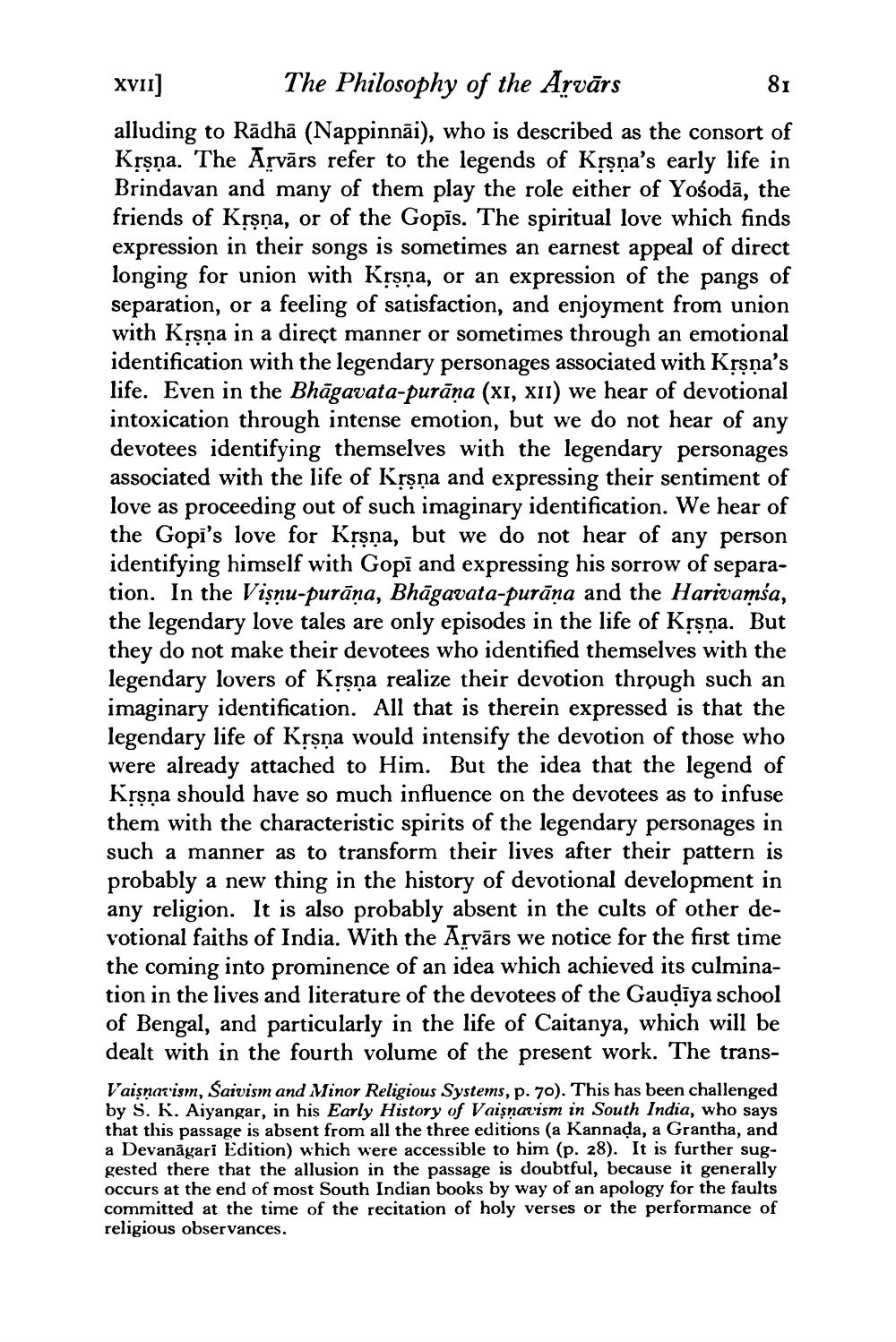________________
XVII]
The Philosophy of the Arvārs
81
alluding to Rādhā (Nappinnāi), who is described as the consort of Kṛṣṇa. The Arvārs refer to the legends of Kṛṣṇa's early life in Brindavan and many of them play the role either of Yośodā, the friends of Kṛṣṇa, or of the Gopis. The spiritual love which finds expression in their songs is sometimes an earnest appeal of direct longing for union with Kṛṣṇa, or an expression of the pangs of separation, or a feeling of satisfaction, and enjoyment from union with Kṛṣṇa in a direct manner or sometimes through an emotional identification with the legendary personages associated with Kṛṣṇa's life. Even in the Bhāgavata-purāṇa (XI, XII) we hear of devotional intoxication through intense emotion, but we do not hear of any devotees identifying themselves with the legendary personages associated with the life of Kṛṣṇa and expressing their sentiment of love as proceeding out of such imaginary identification. We hear of the Gopi's love for Kṛṣṇa, but we do not hear of any person identifying himself with Gopi and expressing his sorrow of separation. In the Viṣṇu-purāṇa, Bhāgavata-purāṇa and the Harivamsa, the legendary love tales are only episodes in the life of Kṛṣṇa. But they do not make their devotees who identified themselves with the legendary lovers of Kṛṣṇa realize their devotion through such an imaginary identification. All that is therein expressed is that the legendary life of Kṛṣṇa would intensify the devotion of those who were already attached to Him. But the idea that the legend of Kṛṣṇa should have so much influence on the devotees as to infuse them with the characteristic spirits of the legendary personages in such a manner as to transform their lives after their pattern is probably a new thing in the history of devotional development in any religion. It is also probably absent in the cults of other devotional faiths of India. With the Arvārs we notice for the first time the coming into prominence of an idea which achieved its culmination in the lives and literature of the devotees of the Gauḍīya school of Bengal, and particularly in the life of Caitanya, which will be dealt with in the fourth volume of the present work. The trans
Vaisnavism, Saivism and Minor Religious Systems, p. 70). This has been challenged by S. K. Aiyangar, in his Early History of Vaisnavism in South India, who says that this passage is absent from all the three editions (a Kannada, a Grantha, and a Devanagari Edition) which were accessible to him (p. 28). It is further suggested there that the allusion in the passage is doubtful, because it generally occurs at the end of most South Indian books by way of an apology for the faults committed at the time of the recitation of holy verses or the performance of religious observances.




